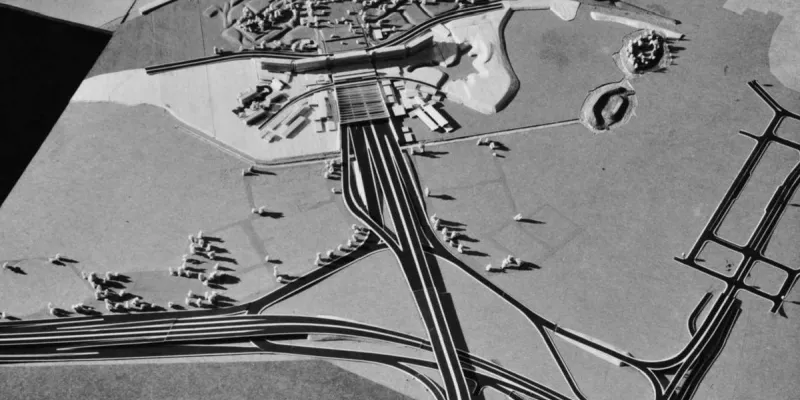No, don't worry, London's most hated road project isn't being revived - it's just the return of our pages about the next of the Ringways.
For almost 14 years, Roads.org.uk has been home to a major research project into the biggest thing never to happen to London: a network of urban motorways that would have given the capital four ring roads and countless radials, reshaping its communities and changing life in the city forever. It's an incredible story of a chapter of London's history that has almost been forgotten, and we're proud to be piecing together the details so it can be told.
Back in 2017, when the site was relaunched, the pages describing the Ringways hadn't been updated for almost a decade and were a long way behind the research. So far, in fact, that I decided there was no point in redesigning outdated (and sometimes plain inaccurate) information to fit the new website when a complete rewrite and update was in order. That's what has been happening since summer 2017. The new pages aren't coming online as fast as I'd like (or, as my inbox and Twitter feed would suggest, as fast as you'd like), but the good news is that Ringway 2 is now, at last, back online.
Consider it your Christmas present from Roads.org.uk! I'm sorry it's not gift wrapped.
What's changed?
The original pages on Ringway 2 were, in places, disappointingly brief, because not much information had come to light about the North Circular Road (which would have been incorporated into the route) and because the history of the south side - which is, let's be honest, the juicy stuff - was covered by a completely separate article, long since taken offline because I wrote it in 2002 and it was terrible.
Huge amounts of new information have come to light since then, so the new pages are stuffed with all sorts of detail that the old pages could only skim over. It's been split into north, east, south and west as before - but the boundaries between those sections have shifted to better reflect the boundaries between different transport authorities and projects. And there's a whole new page for the Clapham-Wandsworth Link, which barely registered as a footnote before, but which is really a road in its own right and a very important one with a complex history at that.
Plus, of course, there's all the lovely features common to all the rejuvenated Ringways pages:
- New information, new illustrations, and almost entirely new text.
- Detailed maps of each road, showing junction layouts where they're known. The maps are overlaid on modern Ordnance Survey mapping and now also show the GLC Secondary Road Network. The maps on all the Ringway 1 pages have been updated to match, with new information added here and there.
- A full cost breakdown and a rough equivalent amount at 2014 prices.
- A full list of references and picture sources.
What's next?
The pages now online - the background, Ringway 1 and Ringway 2 - are the big ones. The other routes were either not planned in such detail, or exist in large part, so don't require the same level of description, so they will be quicker to write and shorter to read. Hopefully they will be quicker to appear online as a result.
Next up will be Ringway 3, then 4, and then the radial routes in regional groups.
In the meantime, though, please enjoy the history of Ringway 2 - a ring road universally hated in its time that only looks ever more incredible and horrifying with the benefit of hindsight, and a story we can't believe is so thoroughly forgotten even in the parts of South London that fell in its shadow. You'll find it on the Ringways pages.
If you enjoy it, please do leave a comment to let me know - and if you find anything wrong, feel free to drop me a line.
Elsewhere on
Roads.org.uk...
Ringways
The story of an incredible plan to reshape London into a city of motorways, with the history from creation to cancellation and details on every unbuilt road.
Add new comment
Picture credits
- Archive photograph of M23 interchange and Thamesmead architectural models are used under licence from London Metropolitan Archives, City of London (Collage record numbers 247786 and 238114).
- Artist's impression of braided interchange at Clapham Junction extracted from GLC/TD/DP/LDS/02/097.



